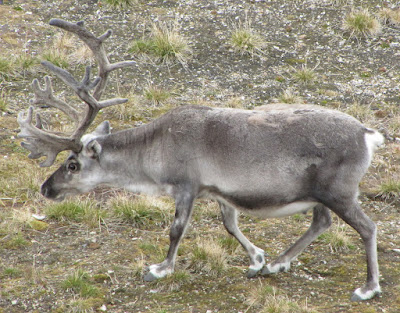After four flights over two days, we finally made it to Ny-Ålesund, the research station we will be calling home for the next couple weeks!
Leaving from London-Heathrow we had a short layover in Oslo and an overnight stop in
Tromsø. Since Tromsø is above the
Arctic Circle it means that we didn’t see darkness and won’t again until August 10th! From Tromsø we flew to
Longyearbyen, the major city of Svalbard. There, Fjord encountered his first polar bear (stuffed, in the airport), had some fun on the luggage carousel, and boarded our final plane – and it was a small one! With pilot and co-pilot there were only 12 people on board.
Fjord's First Polar Bear

Even though it was only a 25 minute flight from Longyearbyen to Ny-Ålesund, the scenery was the most breathtaking we’ve seen yet, especially since the pilot nicely stayed below the cloud cover.
Flight from Longyearbyen to Ny-Ålesund

We landed! Gareth, Fjord, and our plane.

It’s 5°C and overcast here (but no rain – check out the
weather anytime here), we’ve eaten dinner, and so far seen geese,
Arctic terns and an
Arctic fox. Fieldwork starts immediately, and we’ve also already been inducted at the Norwegian research station and gotten our kit together. A bit later on we’ll give you a tour of the town, but suffice it to say that Allen has already found the world’s most northerly
rowing machine.
After a bit of training we’ll get out into the field as soon as we can!

























 The FSF exists to (
The FSF exists to (